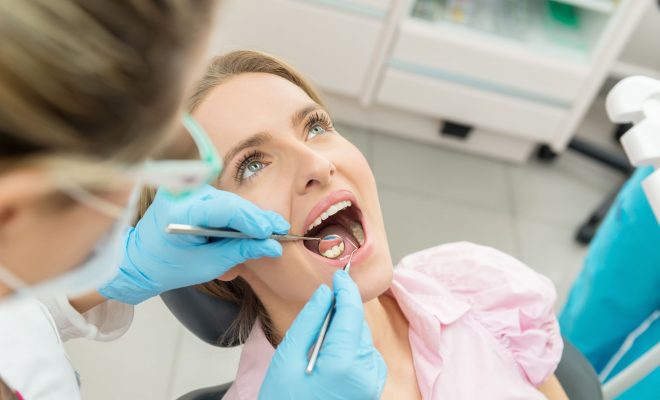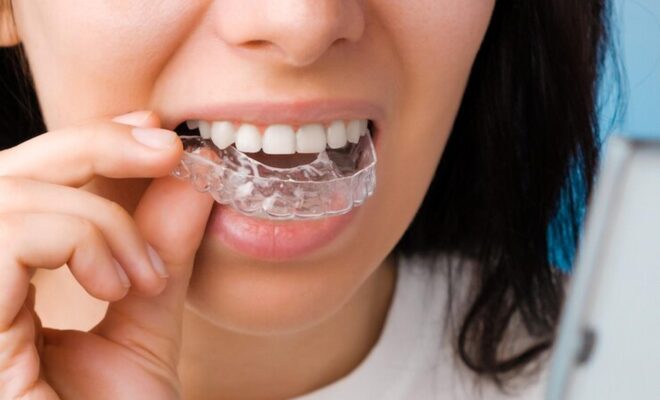7 Types Of Dentistry You Didn’t Know Existed, Yet Stand To Benefit From

Though many people dread visiting the dentist, there’s no denying that consistent care for your teeth is essential for enjoying a healthy — and hygienic — lifestyle. Thankfully, dental technology and techniques are constantly evolving, allowing for higher-quality care and less invasive treatment.
Unfortunately, many patients aren’t fully aware of the various treatment options available to help them enjoy a brighter, healthier smile.
To learn more about some of these newer techniques, I spoke with Yuri Merezhnikov, entrepreneur and owner of Dental Beauty PA, and Dr. Nina Izhaky, practicing dentist and owner of Tribeca Dental Studio.
Here’s a closer look at new types of dentistry that could benefit you and your family:
1) Invisalign
Teens have long viewed braces as a traumatic dental treatment — but with Invisalign, there’s a less unsightly alternative that doesn’t require brackets, wires or bands. Better still, with an average treatment time of 13.5 months, correction can be completed much faster than with standard braces.
“Invisalign users clear aligners that are almost invisible. They’re made with plastic and are actually removable so they can be taken out for eating or brushing your teeth, making them far more convenient to wear,” says Merezhnikov.
“The trays are adjusted over time to gradually move your teeth into proper alignment without the inconveniences of traditional braces.”
2) Pinhole Surgery
With close to half of American adults suffering from periodontal disease, gum recession is an increasingly common medical condition. If left unchecked, this can actually cause patients to lose a tooth. Painful and invasive gum grafts are often required to correct the condition.
“We can actually correct the problem before gum graft surgery is required thanks to pinhole surgery,” Merezhnikov notes.
“By making a small incision in the affected gums, we can guide the gums back to their proper position without the need for more invasive techniques. As a result, the healing process is much quicker and you can avoid more expensive surgery.”
3) Crown Lengthening
Also referred to as gingival contouring, this dental procedure can go a long way in improving the appearance of your smile. “We call it crown lengthening because this process actually helps your teeth appear larger,” explains Izhaky.
“The problem occurs when the gums are too low, which hides most of the surface area of normal-sized teeth. Laser technology allows us to realign the gum structure and remove excess tissue to get rid of a ‘gummy’ smile.”
Though the procedure isn’t medically necessary, it can help you feel more confident about your smile when you show off your teeth — a worthwhile investment for many individuals.
4) Tooth-Colored Fillings
Tooth-colored fillings are another cosmetic improvement to today’s dental treatments.
“These fillings are made with a composite resin to achieve a precise color match with your teeth,” Izhaky says. “They also bond directly to the teeth, helping you preserve a more natural-looking smile than with traditional fillings.”
Studies have found that with proper care, composite fillings have a low failure rate and tend to be safer overall in comparison to traditional amalgam fillings.
5) Bite Guards
Mouth guards aren’t just for sports anymore. Today, bite guards can be custom molded to fit an individual’s teeth to provide improved protection and comfort.
“Bite guards don’t just protect you from injury during contact sports,” Merezhnikov adds.
“Many people unconsciously clench or grind their teeth at night, which can wear your teeth down over time — even if you’re otherwise practicing sound dental hygiene. A bite guard will help keep you from grinding your teeth so you can avoid these harmful consequences.”
6) Dental Sealants
Children can have an especially hard time keeping their teeth clean as they learn proper brushing and flossing techniques. In fact, it’s estimated that 42 percent of children will develop at least once cavity by the time they are 11 years old.
Dental sealants have proven to be an effective solution to this common problem. “Dentists generally apply sealants to a child’s molars, because these teeth are harder to reach during brushing,” says Izhaky.
“These clear coatings create a protective barrier against bacteria that can last from five to 10 years. They’re easy to apply, and can also help adults who are more prone to tooth decay.”
7) Sedation Dentistry
Studies have found that as much as 60 percent of the population experiences some level of anxiety about going to the dentist, with five to 10 percent experiencing dental phobia.
This can transform even a routine visit into a stressful, panic-inducing event.The introduction of sedation dentistry has gone a long way to counteract these fears. By administering sedative drugs, dentists can counteract a patient’s anxiety so that even the most phobic individuals can receive quality care.
When trying to choose a quality dentist, don’t just look for someone who can take care of a standard filling or equip your child with braces. Consider finding someone who can offer these additional dental services.
Your teeth will thank you!












